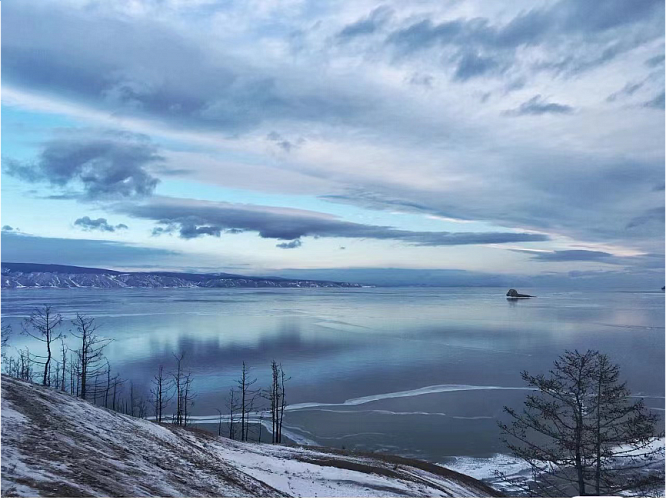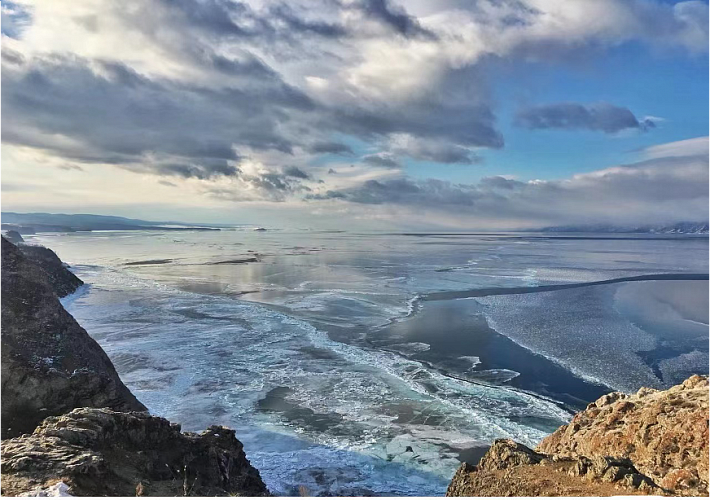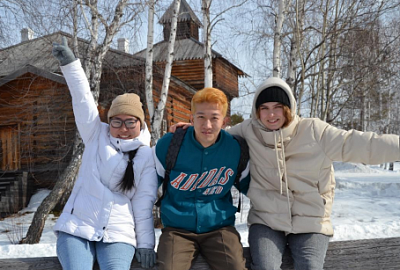Travel to Baikal, across Russia
Lake Baikal is located in southern Siberia, Russia, between Buryatia and Irkutsk. With a total volume of 23.6 trillion cubic meters, Lake Baikal is the world's deepest lake and the largest freshwater lake in Eurasia, reaching 1,637 meters at its deepest point. The lake is 636 kilometres long, 48 kilometres wide on average, and covers an area of 31,500 square kilometres. It is formed by the collapse of strata. The lake is 455 meters above sea level, and the average water depth is 730 meters. As a result, Lake Baikal is nicknamed "the Pearl of Siberia" and UNESCO listed it as a World Natural Heritage Site in 1996.
Lake Baikal is unique. Some poetically describe it as a meniscus, set in the depths of Eurasia. For millions of years, surrounding rivers have poured water into this closed, tectonic rift, creating the world's largest and deepest freshwater lake. Its total area is seven times that of Qinghai Lake, the largest lake in China, and its water storage capacity is 33 times that of all the lakes in China combined, ranking first in the world. The deepest measured so far is 1,642 meters, making it one of the three deepest lakes in the world. To this day, the rift continues to expand at a rate of two to three centimeters per year. Billions of years from now, it will be as vast as the four oceans.
Winter is Baikal's most beautiful blue ice season, when methane gas in the water is frozen under the ice before it can be released, creating a fantastic picture. Sunlight penetrates the frozen surface of the lake and sends heat beneath the ice, creating a "greenhouse effect". Thousands of species of plants and animals thrive in the lake year-round. Three-quarters of them are endemic species, such as the Baikal seal, the world's only freshwater seal. As for when and how they migrate, scientists still don't have a complete explanation.
The lake's largest island, Olkhon, is the center of shamanism practiced by the local Buryat people. Sitting on a towering cliff, white clouds dotted the blue sky, beneath which lay a calm, blue ocean of water. Seagulls fly across the lake from time to time, and occasionally a seal springs up from under the water, breaking the calm of the lake. In the distance, a group of Koreans stood on the edge of a cliff, chanting to the accompaniment of guitars. Time slows down. I sat down with my friends, in this lofty, ethereal atmosphere, feeling how I appreciate the essence of nature.
Lake Baikal has a special story:
Lake Baikal, the world's deepest lake, was measured at 1,637 meters at its deepest point in 2015. It's already deep enough, but the depth data for Lake Baikal is being updated and getting deeper every year.
If we look at Lake Baikal from a geological perspective, we will find that it is in the middle of a deep rift valley. This rift valley is like a huge scar that the earth has torn open, and it is still cracking.
The Baikal Rift is considered by many geoscientists to be the second largest rift valley in the world after the East African Rift.
Lake Baikal is nicknamed "the Pearl of Siberia" and UNESCO listed it as a World Natural Heritage Site in 1996









